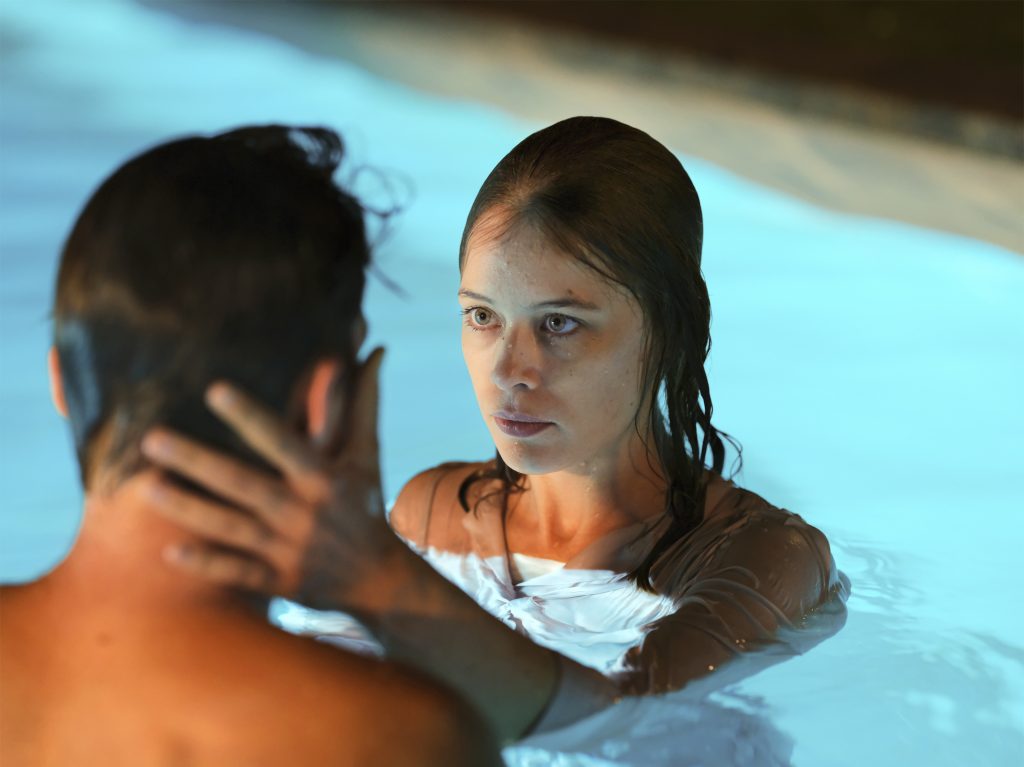
Undine is a film of faces. The opening scene already shows a promising, unique close up of Paula Beer and Jacob Matschenz, a promise that the film is going to continue to keep. It will stay close to the characters, not losing its topic of mythical reality. In the way Matschenz and Beer look at each other, the great tragedy of their love is revealed in one frame. Something is going to end to make space for another love that will keep Undine alive. „If you are going to leave me“, Undine will say a little later, „I will have to kill you!“
Death is the enforcement of love. In the fairy-tale that forms the basis of Christian Petzold’s film, Undine comes from the deep waters to dry ground to find any kind of love and with it a human soul – to live on amongst them forever. That is not such an easy task. In the end, she kisses the knight that left her frightful for someone else to die. After Anna Seghers Novel Transit, Petzold used a fairy tale, based in France and unforgettably narrated by Friedrich de la Motte Fougue for the German realm, as a breeding ground for his film. The romantic aspect is one pillar of his film, the present day in Berlin another. The idea derives directly from the shooting of Transit in France, where actors Paula Beer and Franz Rogowski, fail to have a happy cinematic love affair. So Petzold told them the tale of Undine, who comes out of the water to find love – and promised them a satisfying love story as a new project to make up for their mischief in France. Because Transit‘s Georg and Marie are not able to come together, Undine and Christoph can have a limited mythical love affair. And since he is a lying rogue, Petzold said at the press conference, he pretended to have the whole script already at hand. In reality he improvised the plot straight away – which helped him to put it together lightly and without the heavy literary implications he normally has to omit on during shooting to make the film work.
Undine takes place in present Berlin and at a lake in North Rhine Westphalia, close to the place where Petzold was born and raised. Christoph works as an industrial diver and feels as free as Undine in the underwater world. The images the cinematographer Hans Fromm captured down there, give the place a myth of its own and the giant catfish, symbolizing Undines father, is another fascinating image. In Berlin, Undine works as a tour guide, explaining to people the development of Berlin from the swamps where the name originated to the striving city it is today. No one would think that a historical text could be so poetic and Undines rendition bears the mythical tone of the timeless being she really is. Here the sense of longing and the fairy tale come together. Love, for a short while, gains the absolute value it cannot keep forever. It rids itself from all boundaries of reality and finds an enchanted but limited space underwater.
Petzold takes the myth seriously but his film does not lack humor. In explaining the Humboldt-Forum, for example, Undine says, that the reconstruction of the Berlin City-Castle shows that there is no progress whatsoever. „We might not like it, but at least it’s some kind of statement.“ In fact, this film, which seems to be a simple love story on a private level, has an underlying political dimension. „In an capitalistic world,“ Petzold says, „our dreams are shattered and float around in the oceans as plastic waste. If cinema is not able to give us back our dreams for at least 90 minutes, nothing else can. This is the place where wishing still helps.“
Ulrich Sonnenschein
© FIPRESCI 2020
Edited by Karsten Kastelan
